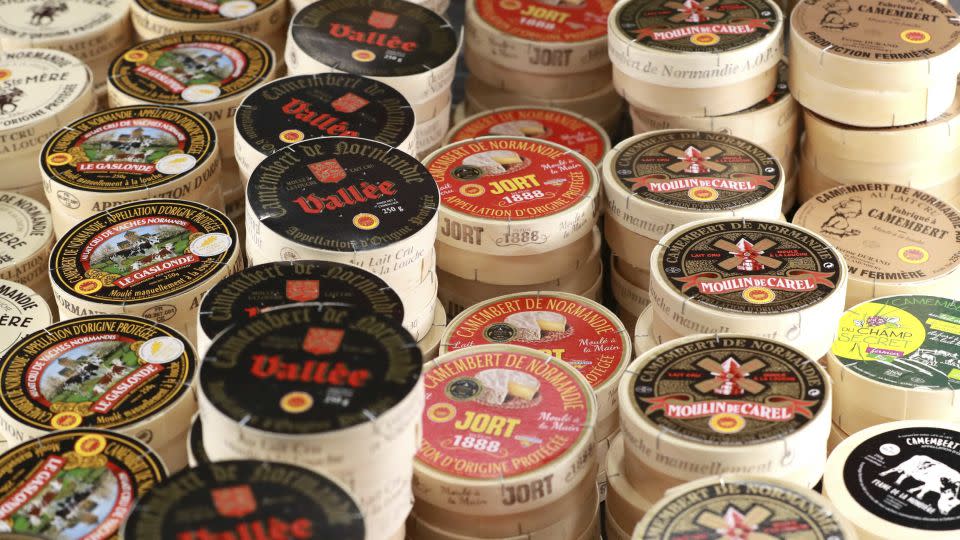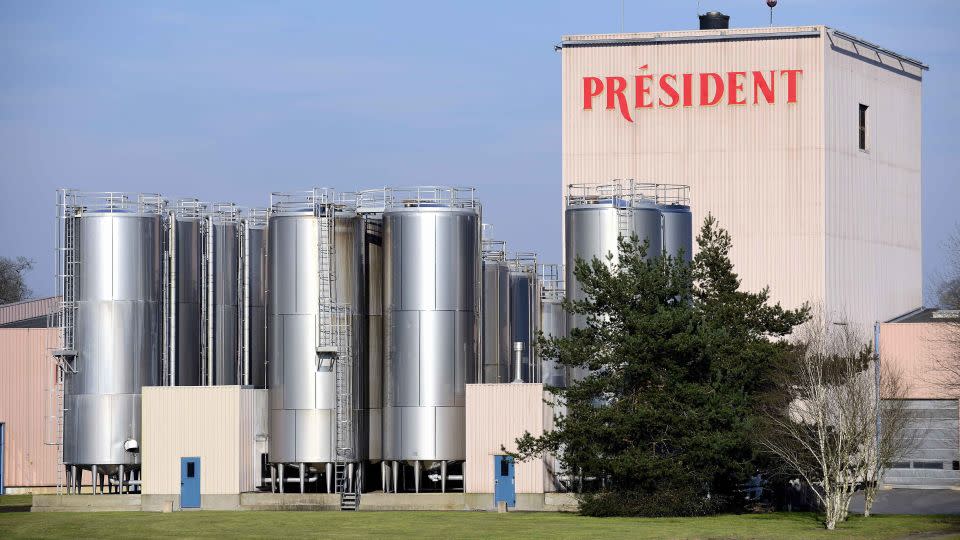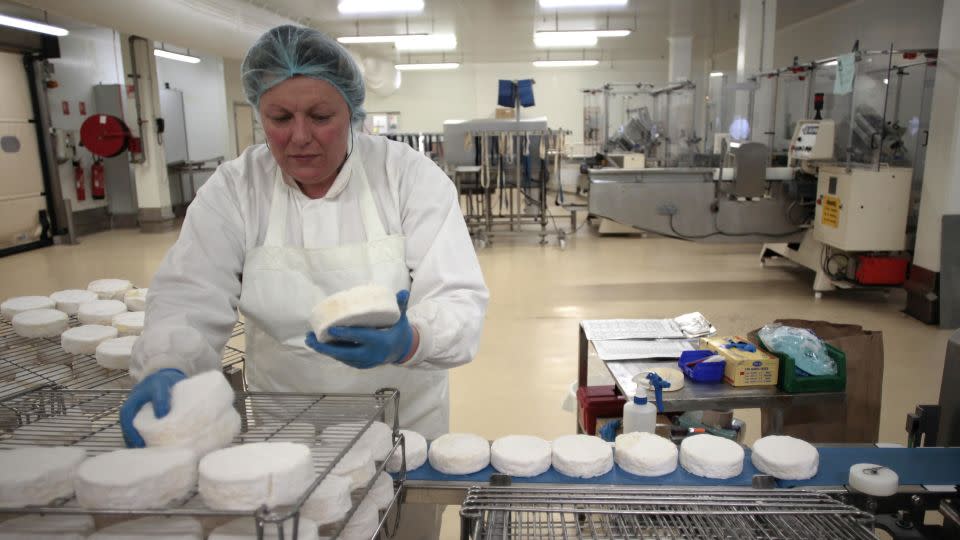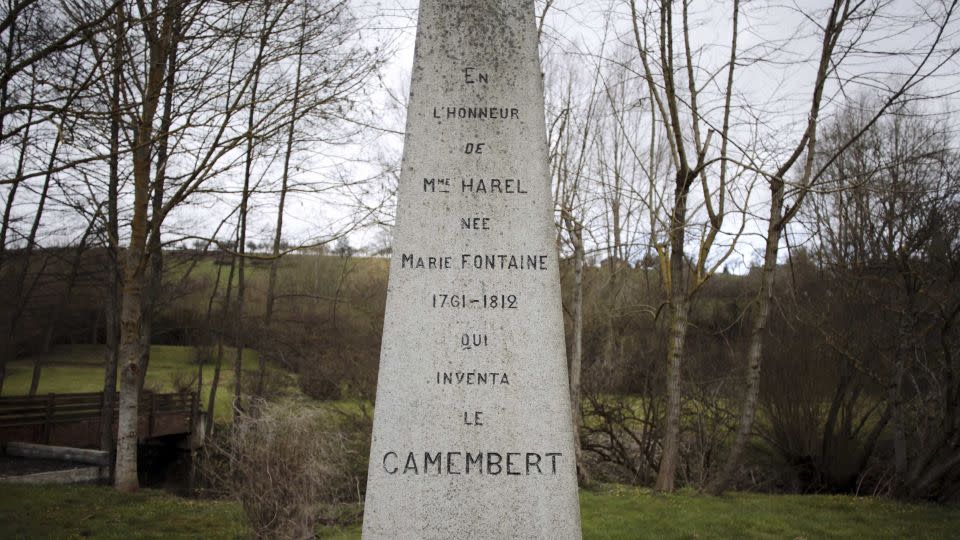According to legend, when Napoleon first encountered a Camembert cheese, he was so delighted that he kissed the waitress who placed it in front of him. Leaving aside the inappropriateness of this gesture, the French Emperor clearly recognized a winner.
Creamy, tart and gooey, the cheese has been produced in various forms in the northwestern region of Normandy since the 18th century and is now considered France’s favorite.
That is why recent headlines about the impending death of Camembert due to a mold crisis have caused panic among fans of this historic fromage. It appears scientists have warned that problems with the industrial production of French cheese could have long-term consequences for its future.
Alarms were raised in January when a recent study by scientists at Paris-Saclay University found that the main mold used in making camembert and other cheeses was becoming increasingly scarce due to the industrial production methods used to meet demand .
And while that could spell trouble for a variety of dairy products, some think it means poor Camembert – which is conveniently sold in its own wooden box – is on its way to the grave.
“Blue cheeses may be under threat, but the situation is much worse for Camembert, which is already on the brink of extinction,” the French National Center for Scientific Research (CNRS) said in its report on the findings. Elsewhere, another headline warned of a looming ‘cheese crisis’, adding: ‘say a prayer for camembert!’
The cheese stakes couldn’t be higher. Alongside the Louvre, haute couture and the Eiffel Tower, Camembert is a national treasure loved the world over – as existential to the French as existentialism.
“What is the typical image of France? A bottle of red wine, a baguette and a Camembert,” says Anne-Marie Cantin, an experienced cheesemonger and jury president of the 2023 French national Camembert competition. “It is our national cheese.”
Old mold
At the heart of the problem is Penicillium camemberti, a fungus used in cheese making that gives Camembert its white rind and helps develop both the cheese’s rich buttery umami flavor and the palpable aroma of unwashed socks.
P. camemberti is experiencing reproductive problems, say the Paris-Saclay scientists, largely due to the pressures of industrial production. Not so much performance anxiety itself, but the result of an asexual fungal breeding process that, due to an extreme lack of genetic diversity, is deflating.
Camembert and similar cheeses such as Brie were once aged in caves halloirs (drying rooms), where naturally occurring mold spores gave a blue or sometimes yellow-brown crust. At the turn of the last century, Penicillium camemberti was introduced, replacing the native fungus and creating the uniform white crust we know today.
“It is thought to be a white mutant selected from the gray-green species Penicillium commune for its color at the beginning of the 20th century,” the Paris-Saclay study said.
Unfortunately, unlike its cave-dwelling fungal counterparts, researchers found that Penicillium camemberti has very low genetic diversity and a reduced ability to reproduce sexually.
“Our findings raise questions about the use of a limited number of clonal strains for cheese making, which often leads to degeneration, limiting opportunities for further improvement,” the study said.
This means, according to the CNRS report, that it “is now very difficult for manufacturers to obtain sufficient quantities of P. camemberti spores to inoculate their cheese production in Normandy.”
Fall and rise

It is not the first time that Camembert has faced a crisis following the introduction of P. camemberti. According to the late Patrick Lance, a British cheese expert who wrote a definitive guide to French cheese, it was nearly wiped out by the industrialization and conflict of the last century.
“Two world wars and too many big corporations almost took Camembert to its grave in all but name,” he wrote in his definitive 1989 tome, “The French Cheese Book.”
“And this name has been brought into contempt by his failure to protect it from the multitudes of pasteurized factory perversions of the formula, which are being committed throughout almost all of France and beyond.
In 1982, the appellation d’origine protégée (AOP) came to the rescue, meaning that only cheeses made in Normandy could bear the name Camembert. However, that did not prevent further discussions about whether real camembert should be made with raw or pasteurized milk.


Those who have witnessed the rise and fall of Camembert in the past seem to be following the cheese’s latest problem closely.
“My family has been making Camembert since 1891, five generations… I have never heard of this situation,” Bruno Lefèvre, director general of Les fromageries de Normandie, a regional cheesemakers association, told CNN.
“It is true that cheesemakers have fought against the cheese that did not look white,” Lefèvre said, adding that the first batches of Camembert his father made, more than fifty years ago, were “blue, white and red.” ”
But he believes the color difference is the result of bacterial pigmentation.
“It is linked to the type of bacteria Brevibacterium linens, which has the ability to form an orange pigment. It is in no way the result of fungal activity,” says Lefèvre.
France currently hosts its annual cheese fair in Paris, bringing together major cheesemakers from across the country. Naturally, the disappearance of mold is a much-discussed topic. Lefèvre said people he spoke to were confused about where the fear about Camembert’s future came from.


“I have made all kinds of Camembert, from the more traditional to the more industrial. I have never had any problems with my mold,” Lefèvre said.
“This research has been widely reported in the media. Maybe the researchers were trying to scare us cheesemakers, but so far they have not succeeded,” he added.
Although the scientists stand by their claims, they emphasize that there is no danger of Camembert disappearing any time soon. “We always make it clear to journalists that there is no danger to camembert production in the short term,” researcher Tatiana Giraud told CNN. “What our articles say is that there is a great homogenization of starters and that this reduces their ability to adapt, nothing more.”
American cheese joint


Keeping Camembert alive obviously also means keeping the story of the cheese alive. Supposedly it was first created by a Norman woman named Marie Harel, who received tips from a fugitive priest from Brie, another bastion of French cheesemaking. After gaining favor with Napoleon, it played an unexpected role in the First World War, which was commemorated by a statue.
The monument to Harel in the Normandy town of Vimoutiers was actually first built by an American, according to Camembert expert Anne-Marie Cantin.
“An American doctor first came to Normandy after World War I asking to find Marie Harel’s grave and later build a statue for her,” she said.
“To the surprise of the locals, who had difficulty finding someone who spoke English, he explained that he had used Camembert to heal patients during the war and that he wanted to come and thank the inventor.”


That statue was later destroyed in 1944 by American bombing during the Normandy landings and it was a group of cheese factory workers from Ohio who donated to build a new statue after the war, according to Cantin.
The statue still stands proudly in the town square of Vimoutiers in Normandy, with a plaque indicating that it is a gift presented by “400 men and women who make cheese in Van Wert, Ohio, USA.”
Another statue of Marie Harel stands in the Van Wert County Museum in Ohio, quietly marking an extraordinary and inexpensive relationship between France and the United States.
For more CNN news and newsletters, create an account at CNN.com